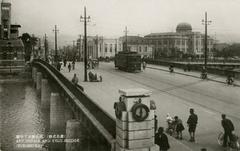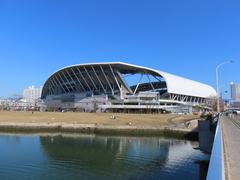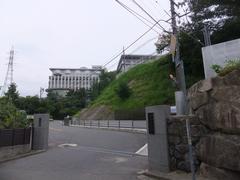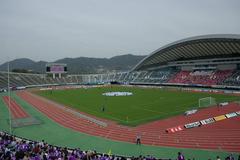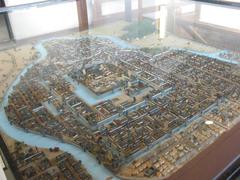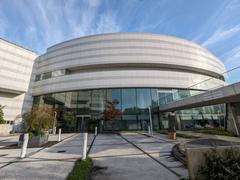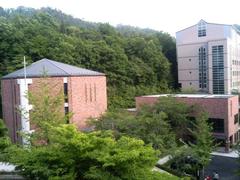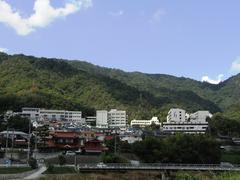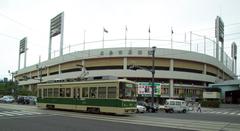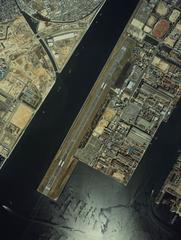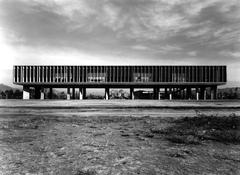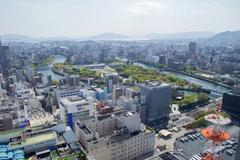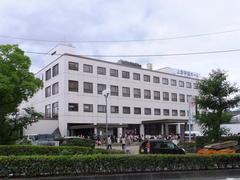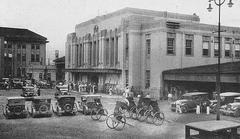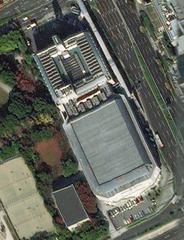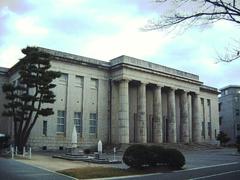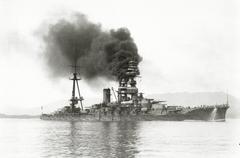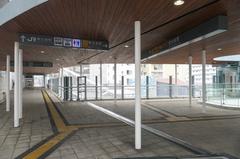
Hiroshima City Ebayama Museum of Meteorology: Visiting Hours, Tickets, and Comprehensive Visitor Guide
Date: 03/07/2025
Introduction
The Hiroshima City Ebayama Museum of Meteorology is a one-of-a-kind institution where the threads of science, history, and peace intertwine. As Japan’s first meteorological museum, it occupies a building that remarkably survived the atomic bombing of Hiroshima in 1945. Today, it stands not only as a scientific resource but also as a living memorial—offering insights into the evolution of meteorology, the resilience of Hiroshima’s people, and the ongoing importance of disaster preparedness. This guide covers everything you need to plan your visit, including opening hours, ticket prices, exhibits, accessibility, and travel tips, ensuring a rewarding and meaningful experience (Dive Hiroshima; Japan Travel).
Table of Contents
- Historical Background
- Educational and Scientific Significance
- Peace, Memory, and Community
- Visitor Information
- Facilities and Accessibility
- Exhibits and Experiences
- Practical Tips and FAQs
- Summary and Further Resources
Historical Background
Origins and Development
The museum is housed in the former Hiroshima Regional Meteorological Observatory, built in 1934. This reinforced concrete structure was a milestone in Japan’s modernization of weather science, contributing vital data for public safety and scientific advancement (Dive Hiroshima). The original observatory began operations in 1879 before moving to its current location on Mt. Eba.
The Atomic Bombing and Aftermath
On August 6, 1945, the observatory was located just 3.7 kilometers from the atomic bomb’s hypocenter. Although it suffered severe damage, the building survived, with glass fragments still visible in the walls today. Observatory staff documented the environmental effects of the bombing, providing invaluable records now preserved in the museum (Japan Travel).
Transition to Museum and Cultural Heritage
In recognition of its historical and architectural significance, the building was designated an Important Tangible Cultural Property by Hiroshima City in 2000 (Wikiwand). It was transformed into a public museum in 1992, ensuring the legacy of both scientific progress and the story of survival would be passed on to future generations (Japan Travel Navitime).
Educational and Scientific Significance
Meteorological Science for All Ages
The museum’s mission is to make meteorology accessible and engaging for everyone. Permanent exhibits include historical and modern weather instruments, interactive displays simulating typhoons and cloud formation, and a restored observation room from the 1930s (Peace Tourism).
- Wind Capsule and Typhoon Room: Experience the force of nature in safe, hands-on simulations.
- Interactive Weather Experiments: Demonstrate cloud formation, wind patterns, and the water cycle.
- Disaster Prevention Theater: Short films and multimedia presentations educate about disaster preparedness.
Preservation of Heritage
The museum preserves and displays scientific equipment, weather records, and artifacts that survived the bombing, highlighting the dual narrative of scientific advancement and historical memory.
Workshops and Special Exhibitions
Science shows, workshops, and seasonal special exhibitions are held regularly, offering fresh content for repeat visitors and school groups. Check the museum’s event calendar for details.
Peace, Memory, and Community
A Living Memorial
As a rare A-bombed building still standing, the museum offers a solemn space for reflection. The preserved blast damage, especially on the north wall facing the hypocenter, connects visitors directly to Hiroshima’s past and the enduring pursuit of peace (Peace Tourism).
Community Engagement
The museum engages with local schools and organizations through educational outreach, guided tours, and targeted science activities. It is also part of Hiroshima’s “Peace Tourism” network, complementing sites like the Peace Memorial Park.
Visitor Information
Location and Access
- Address: 1-40-1 Eba-minami, Naka-ku, Hiroshima, 730-0835, Japan
- By Tram: Take Hiroshima Electric Railway (Hiroden) Line 6 to Eba Station; 5–10 minutes on foot uphill.
- By Bus: Several city bus lines serve the Eba area.
- Parking: Limited spaces available; public transportation recommended.
Opening Hours
- Open: Tuesday–Sunday, 9:00 AM–5:00 PM (last entry 4:30 PM)
- Closed: Mondays (or next day if Monday is a holiday), and Dec 29–Jan 3
Admission Fees (as of 2025)
- Adults: ¥100
- High School/University Students: ¥50
- Junior High and Younger: Free
- Group rates available (30+ visitors); free/discount days for special events (WhichMuseum)
Best Times to Visit
- Spring and autumn for mild weather and scenic views.
- Weekday mornings for a quieter experience.
Nearby Attractions
- Hiroshima Peace Memorial Park
- Hiroshima Castle
- Shukkeien Garden
Facilities and Accessibility
- Wheelchair Accessible: Ramps, elevators, and accessible restrooms throughout (Japan Travel).
- Information Desk: Brochures in Japanese and some English.
- Lockers: Coin-operated (small bags only).
- Gift Shop: Weather-themed souvenirs and books.
- Vending Machines: Drinks available; no full café.
- Wi-Fi: Available in select areas; check at the information desk.
Exhibits and Experiences
Permanent Exhibits
- Meteorological Instruments: Displays of barometers, anemometers, and early weather technology.
- Atomic Bomb Damage Exhibit: Artifacts and structural remnants demonstrate the building’s survival.
- Restored Observation Room: Experience the environment of 1930s–1940s meteorologists.
Interactive Zones
- Weather Experiment Corner: Hands-on activities for all ages.
- Observation Deck: Panoramic views of Hiroshima and the Seto Inland Sea with telescopes.
Special Events
- Workshops, science demonstrations, and guided tours are offered, especially during holidays and commemorative periods.
Practical Tips and FAQs
Tips for Visitors
- Wear comfortable shoes for the uphill walk from Eba Station.
- Photography is allowed in most areas (no flash/tripods in sensitive exhibits).
- Plan 1–2 hours for your visit.
- Check for event schedules and possible exhibit changes on the official website.
Frequently Asked Questions
Q: What are the museum’s opening hours?
A: 9:00 AM–5:00 PM (last entry 4:30 PM), closed Mondays and New Year holidays.
Q: How much is admission?
A: ¥100 for adults, ¥50 for students, free for children under junior high.
Q: Is the museum accessible for wheelchair users?
A: Yes, with ramps, elevators, and accessible restrooms.
Q: Are there English-language resources?
A: Some signage and pamphlets are available in English; most exhibits are in Japanese.
Q: Can I take photos?
A: Yes, except where posted.
Q: Are guided tours available?
A: Mainly in Japanese, with some English support by prior arrangement.
Summary and Further Resources
The Hiroshima City Ebayama Museum of Meteorology stands at the crossroads of science, history, and peace. Its exhibits illuminate both the evolution of meteorological science and the enduring spirit of Hiroshima, offering an experience that is educational, inspiring, and deeply moving. Whether you are a science enthusiast, a history buff, or a traveler seeking meaningful cultural experiences, this museum is a must-visit destination in Hiroshima.
For more information, event updates, and downloadable guides, visit the following official and recommended resources:
Plan your visit today and explore the intersection of meteorology, history, and hope at the Hiroshima City Ebayama Museum of Meteorology. For more travel tips and updates, download the Audiala app and follow us on social media.

